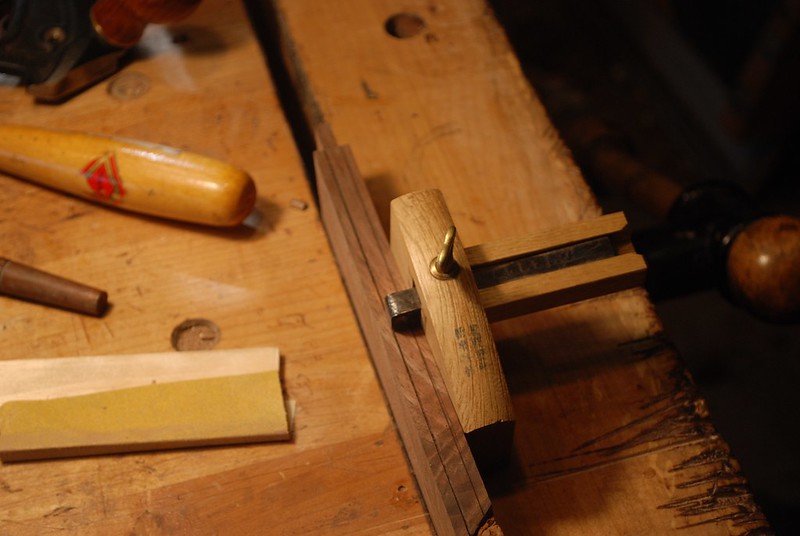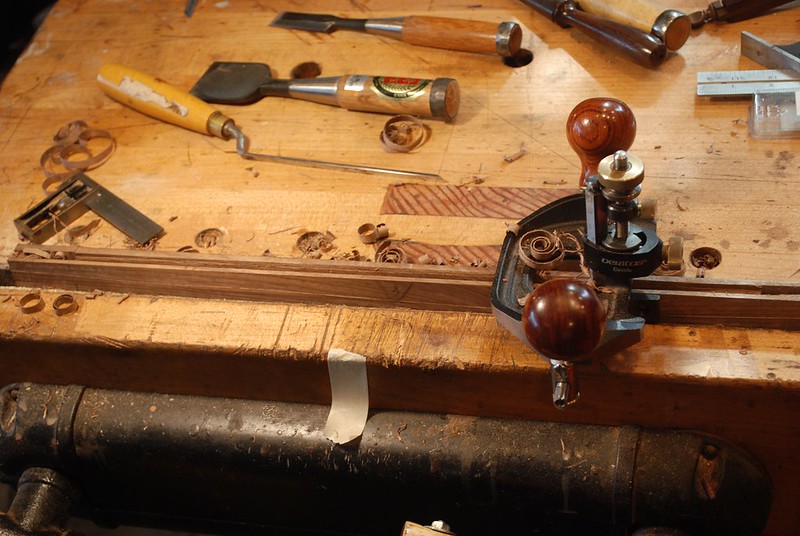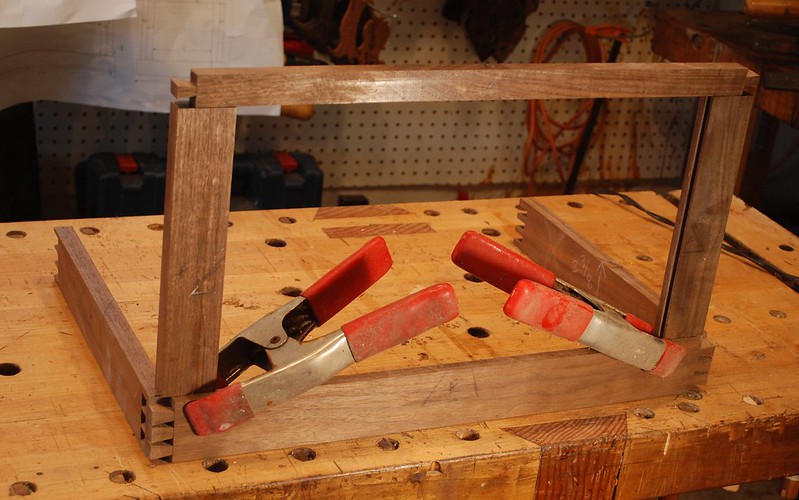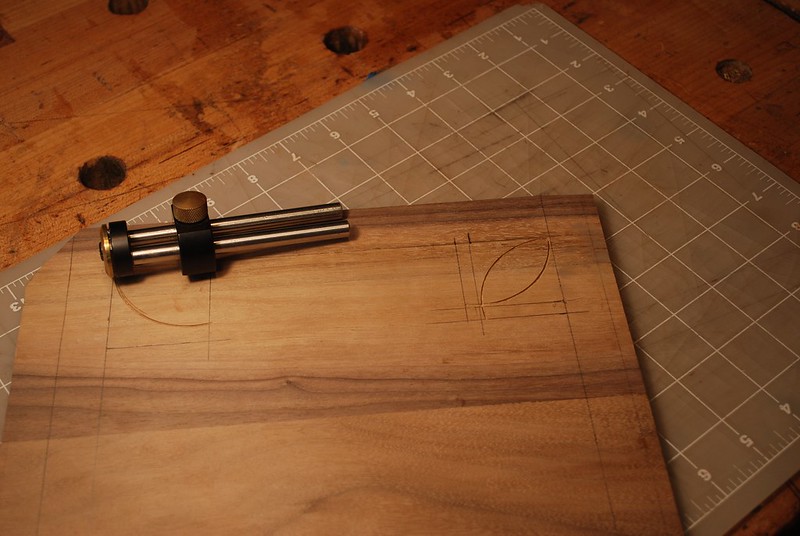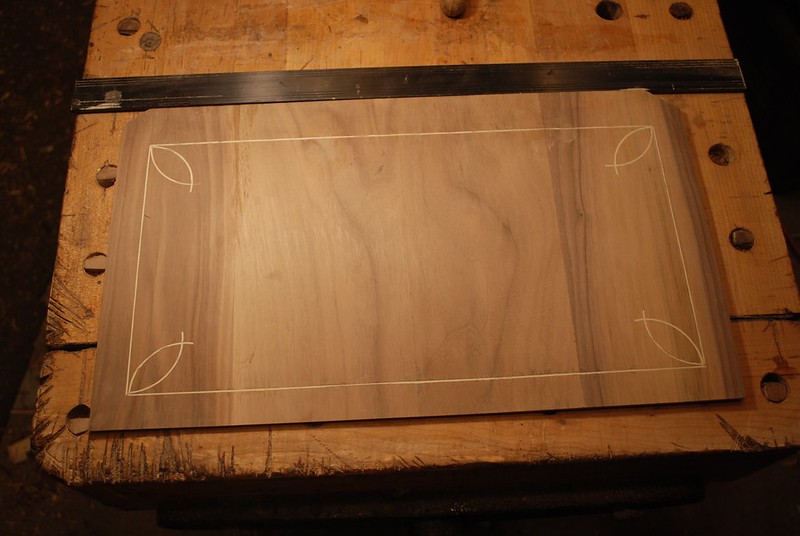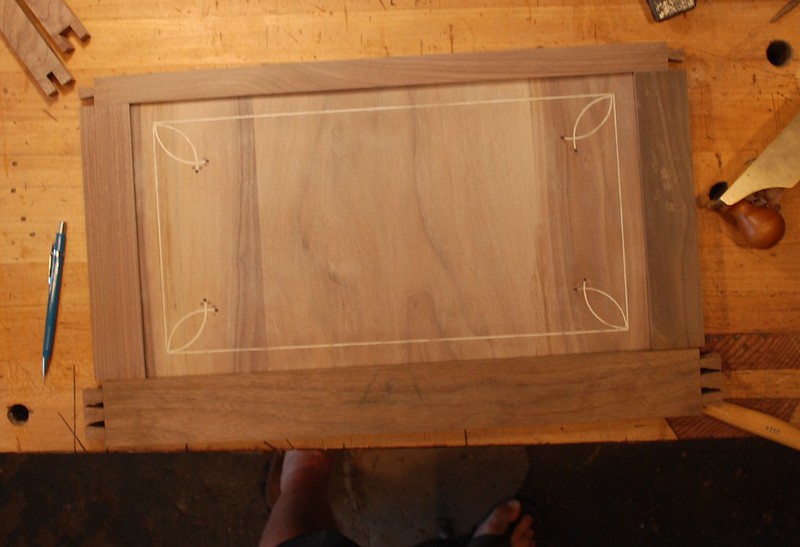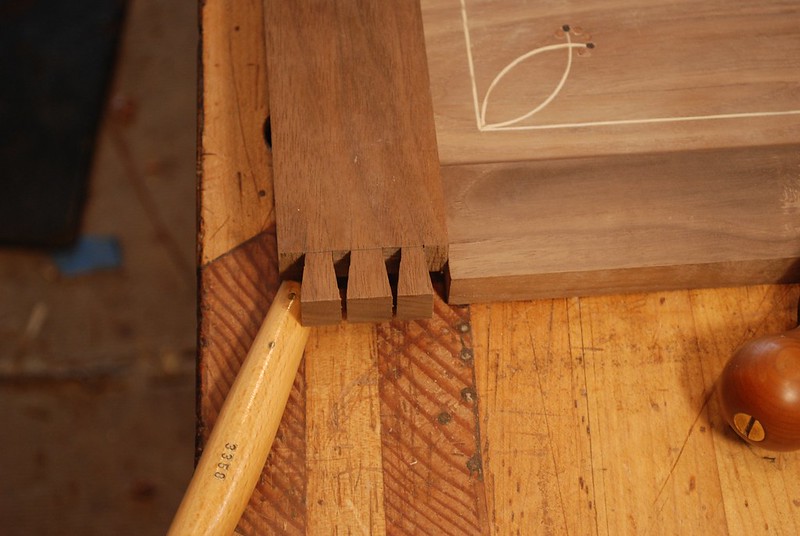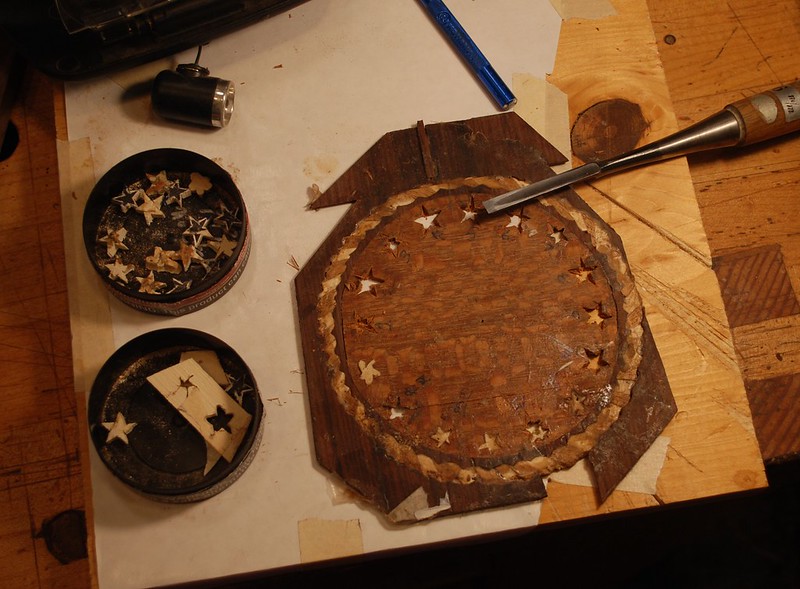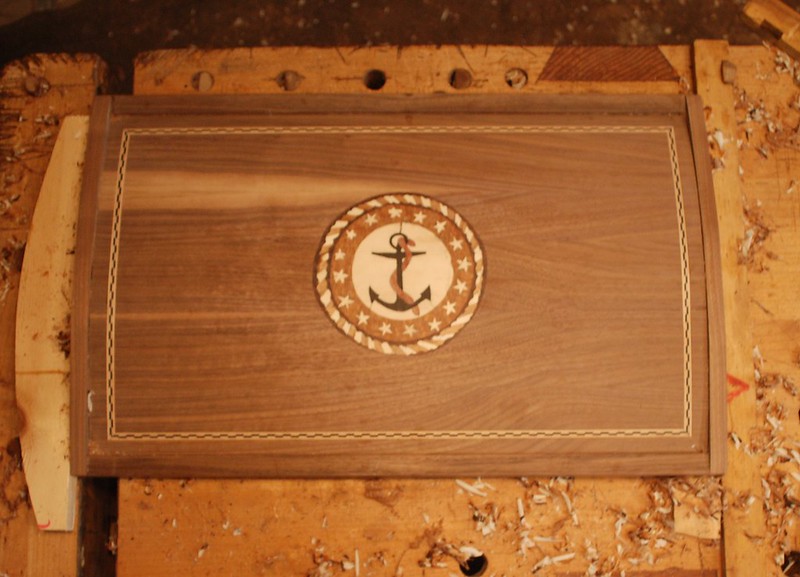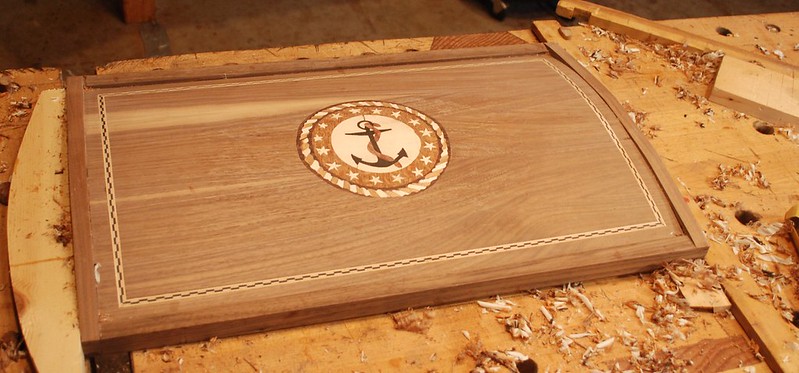As I mentioned in part one, construction/joinery for this chest is unusual; hereís the front panel -the chest stiles are joined to rails by M&Tís. The rails top and bottom are joined to sides of the chest by dovetails. Hopefully thatíll make more sense with subsequent pictures
1 by Mike Allen, on Flickr
Here is sawing out the tennons. For the ripping/cheeks I like a sturdy saw plate Ė this is a shop built saw with .025Ēthick plate. For the cheeks, a shop built .015Ē thick plate crosscut back saw Ė one of my favorite tools.
3 (2) by Mike Allen, on Flickr
3.5 by Mike Allen, on Flickr
The bottom rail is proud of the front of the chest. Because Iím using 4/4 stock, stiles are joined with open lap joints that will later be screwed.
3 by Mike Allen, on Flickr
In frame and panel construction getting the show surfaces to fit tightly with M&T joints is key. I like to do most paring freehand with chisels, but for this a job where a finally set shoulder plane really works well.
Hereís the dry assembly before the dovetails are cut in top and bottom rails.
5 by Mike Allen, on Flickr
6 by Mike Allen, on Flickr
7 by Mike Allen, on Flickr
Again because the bottom rails are proud of the vertical plane of the carcass by 3/16Ē, the panel fits into the bottom rail with an open, stopped rabbit. Stopped rabbit/grooves are a headache for me and I usually try and avoid them in the design. When necessary, like in this case, marking gauge and paring chisels work you better for me than rabbit planes that donít reach to the end of the groove/rabbit.
8 by Mike Allen, on Flickr




 Reply With Quote
Reply With Quote